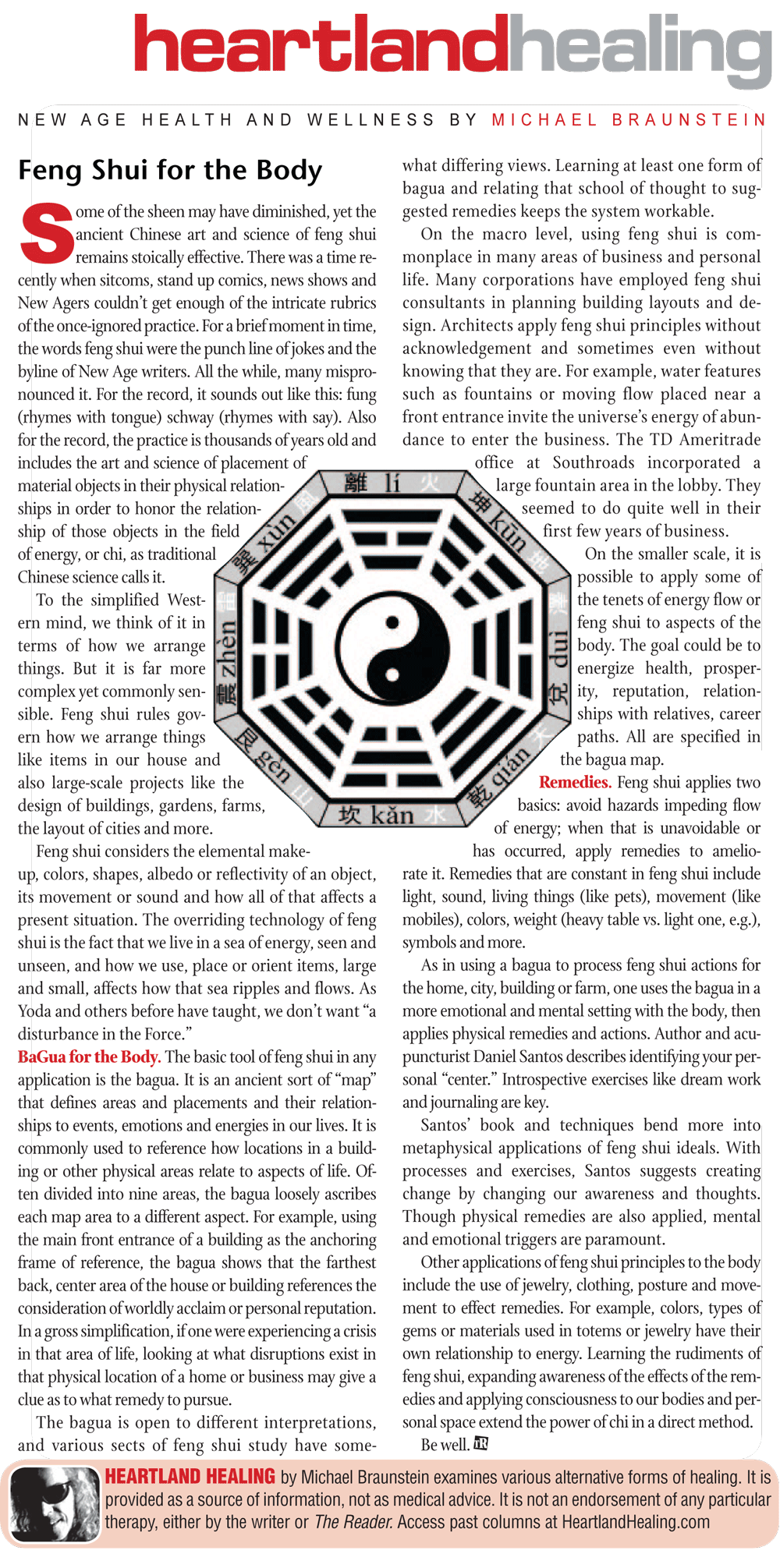|
||||||
| Back to Column Archives | ||||||
FENG SHUI FOR THE BODY remains stoically effective. There was a time re- cently when sitcoms, stand up comics, news shows and New Agers couldn’t get enough of the intricate rubrics of the once-ignored practice. For a brief moment in time, the words feng shui were the punch line of jokes and the byline of New Age writers. All the while, many mispro- nounced it. For the record, it sounds out like this: fung (rhymes with tongue) schway (rhymes with say). Also for the record, the practice is thousands of years old and includes the art and science of placement of To the simplified Western mind, we think of it in terms of how we arrange things. But it is far more complex yet commonly sensible. Feng shui rules govern how we arrange things like items in our house and also large-scale projects like the design of buildings, gardens, farms, the layout of cities and more. The bagua is open to different interpretations, and various sects of feng shui study have somehat differing views. Learning at least one form of bagua and relating that school of thought to sug- gested remedies keeps the system workable. On the macro level, using feng shui is com- monplace in many areas of business and personal life. Many corporations have employed feng shui consultants in planning building layouts and de- sign. Architects apply feng shui principles without acknowledgement and sometimes even without knowing that they are. For example, water features such as fountains or moving flow placed near a front entrance invite the universe’s energy of abun- dance to enter the business. The TD Ameritrade office at Southroads incorporated a large fountain area in the lobby. They seemed to do quite well in their first few years of business.
Santos’ book and techniques bend more into metaphysical applications of feng shui ideals. With processes and exercises, Santos suggests creating change by changing our awareness and thoughts. Though physical remedies are also applied, mental and emotional triggers are paramount. Other applications of feng shui principles to the body include the use of jewelry, clothing, posture and move- ment to effect remedies. For example, colors, types of gems or materials used in totems or jewelry have their own relationship to energy. Learning the rudiments of feng shui, expanding awareness of the effects of the rem- edies and applying consciousness to our bodies and personal space extend the power of chi in a direct method. Be well. |
||||||
|
home • directory • feature column • column archives • news • hot links • calendar
Heartland Healing is devoted to the examination of various alternative forms of healing. It is provided as a source of information and not as medical advice. It is not meant as an endorsement of any particular therapy, either by the writer or by Heartland Healing Center, Inc. © 1997- Heartland Healing All Rights Reserved • Site by Omaha's Desktop Ad Shop |




